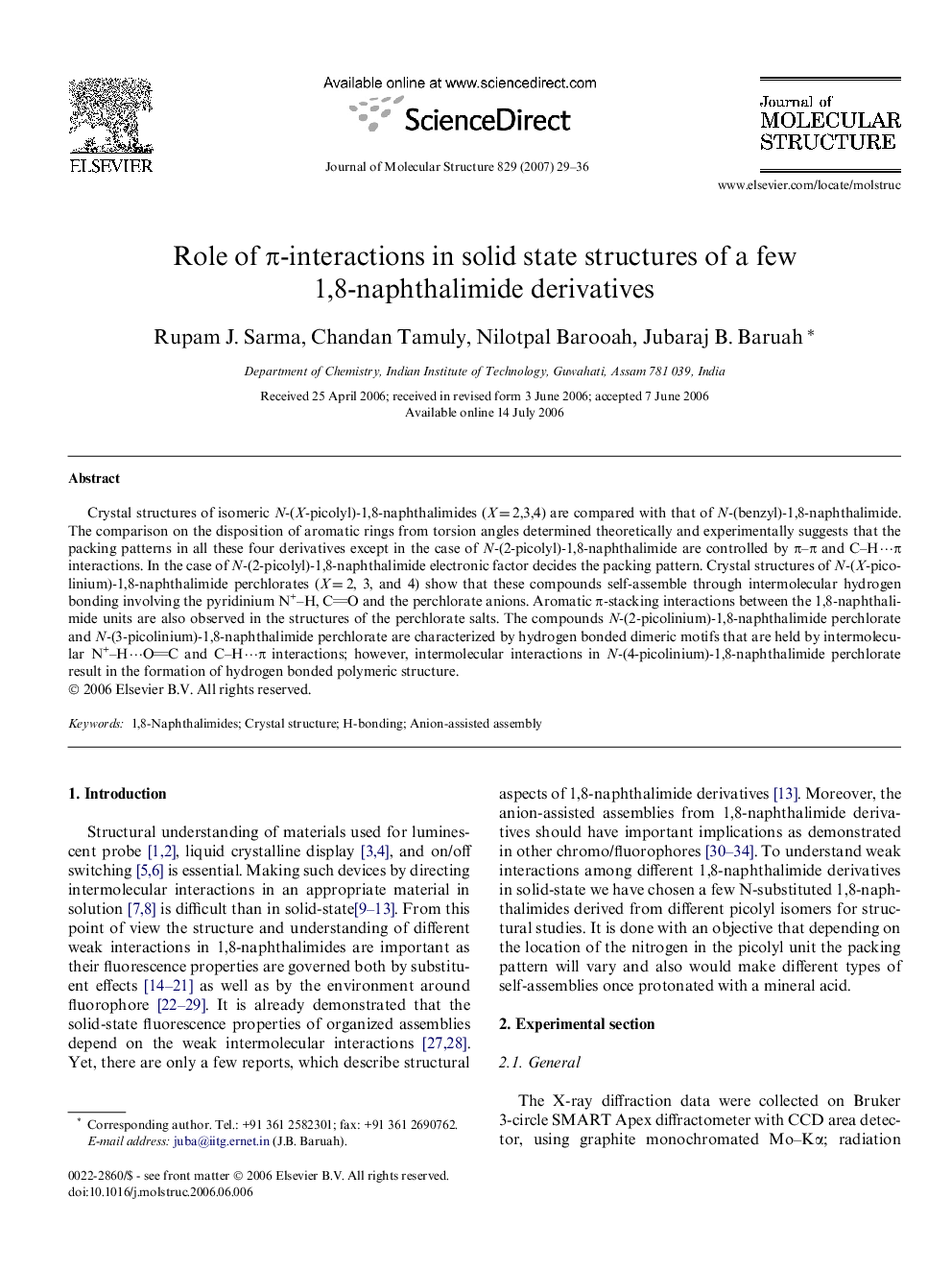| Article ID | Journal | Published Year | Pages | File Type |
|---|---|---|---|---|
| 1408156 | Journal of Molecular Structure | 2007 | 8 Pages |
Crystal structures of isomeric N-(X-picolyl)-1,8-naphthalimides (X = 2,3,4) are compared with that of N-(benzyl)-1,8-naphthalimide. The comparison on the disposition of aromatic rings from torsion angles determined theoretically and experimentally suggests that the packing patterns in all these four derivatives except in the case of N-(2-picolyl)-1,8-naphthalimide are controlled by π–π and C–H⋯π interactions. In the case of N-(2-picolyl)-1,8-naphthalimide electronic factor decides the packing pattern. Crystal structures of N-(X-picolinium)-1,8-naphthalimide perchlorates (X = 2, 3, and 4) show that these compounds self-assemble through intermolecular hydrogen bonding involving the pyridinium N+–H, CO and the perchlorate anions. Aromatic π-stacking interactions between the 1,8-naphthalimide units are also observed in the structures of the perchlorate salts. The compounds N-(2-picolinium)-1,8-naphthalimide perchlorate and N-(3-picolinium)-1,8-naphthalimide perchlorate are characterized by hydrogen bonded dimeric motifs that are held by intermolecular N+–H⋯OC and C–H⋯π interactions; however, intermolecular interactions in N-(4-picolinium)-1,8-naphthalimide perchlorate result in the formation of hydrogen bonded polymeric structure.
